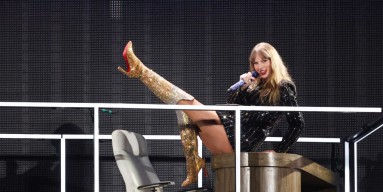Naomi Parker Fraley, the real-life inspiration behind one of the most iconic images in the world, wasn't a factory worker like the posters which featured her suggest, clad in a blue-collar jumpsuit while flexing her muscle. She was actually a California waitress who, for more than 70 years, went unrecognized as the muse behind the iconic image.
Over the years, several women have been identified as the model for Rosie the Riveter, the war worker of 1940s popular culture who was hailed as a touchstone feminist icon in the late 20th century. A Seton Hall University professor in 2016 focused on Fraley as the true one, however.
Unfortunately, Fraley died on Saturday, Jan. 20, aged 96, in Washington. A different woman claimed to be the real Rosie before she was eventually confirmed as the legitimate inspiration in 2016, telling People magazine that she "didn't want fame or fortune."
"But I did want my own identity."
The professor, James J. Kimble, published his findings in the Rhetoric & Public Affairs journal, stating that a photo featuring Fraley was the basis for the widely known poster of a woman flexing captioned with, "We can do it!"
The iconic poster was painted by J. Howard Miller, and it was actually never meant for public display — its intended purpose was to deter absenteeism and strikes among Westinghouse employees during the war, The New York Times reports. For many, many years, Miller's work was obscured. But a copy came to light in the early 1980s — becoming a feminist symbol and earning the name Rosie the Riveter.
Then, it was suddenly everywhere in pop culture. Shirts, posters, coffee mugs, various other memorabilia — the whole nine yards. Now it stands as a permanent fixture in the most iconic imagery the world has ever seen, and it's quite shocking to think that until 2016, the real inspiration was never discovered.
In 2016, The World-Herald interviewed Fraley and asked her how it felt to be publicly known as Rosie the Riveter.
"Victory!" she exclaimed. "Victory! Victory!"
Her death was confirmed by Marnie Blankenship, her daughter-in-law. She was previously married to her third husband Charles Fraley until he died in 1998. Her first marriage to Joseph Blankenship ended in divorce and her second, to John Muhlig, ended when he died in 1971.
Fraley is survived by a son, four stepsons, two stepdaughters, two sisters, three grandchildren, three great-grandchildren, and many step grandchildren and step great-grandchildren.













